Press Release: ROG Unveils Latest Maximus IX and Strix Gaming Motherboards
For the launch of the latest 7th Gen. Intel processors, ROG has brought out an epic line-up of new motherboards to get the best out of them. And with such a line-up, we need a comprehensive guide to let you decide which is right for you. First things first, the list (click to find out more):
ROG Maximus IX Apex
ROG Maximus IX Extreme
ROG Maximus IX Formula
ROG Maximus IX Code
ROG Maximus IX Hero
ROG Strix Z270E Gaming
ROG Strix Z270F Gaming
ROG Strix Z270H Gaming
ROG Strix Z270G Gaming
ROG Strix Z270I Gaming
Thanks to its low power consumption and incredible overclocking potential, the Kaby Lake processor architecture is arguably Intel’s most compelling update ever. With air cooling, we’ve seen some of the i7-7700K CPUs reach frequencies exceeding 5GHz. The last architecture to come close to this feat was Sandy Bridge back in 2011, and it wasn’t as consistent in doing so. If you’re an enthusiast with a penchant for overclocking, Kaby Lake is “must have.”
The new processors are compatible with the 100-series platform by way of a firmware update and also with the latest 200-series chipsets, presenting users with an array of motherboards to suit various budgets. In fact, there’s so much choice that it’s likely to cause confusion. We’re here to help you wade through the options and make the purchasing decision easier.
Widely acclaimed for offering the best firmware, overclocking, fan controls, and IO features, the ROG 100-series motherboards offer a robust feature-set that’s suitable for daily computing all the way to full-bore enthusiast builds. However, the 100-series boards have been around for over a year now and as good as the ROG feature-set is, there’s always room for improvement. The 200-series motherboards offer evolutionary refinements in all areas that made their predecessors the industry’s gold standard, as well as providing new features that raise the bar.
Split among four distinct series; ROG, TUF, Prime, and Strix, each with a unique personality, this is the most comprehensive range of motherboards we’ve ever released. In this guide, we will take a look at the core features that apply to ROG and ROG Strix Z270 motherboards, provide a high-level overview of each series, and then discuss the finer details that set each board apart.
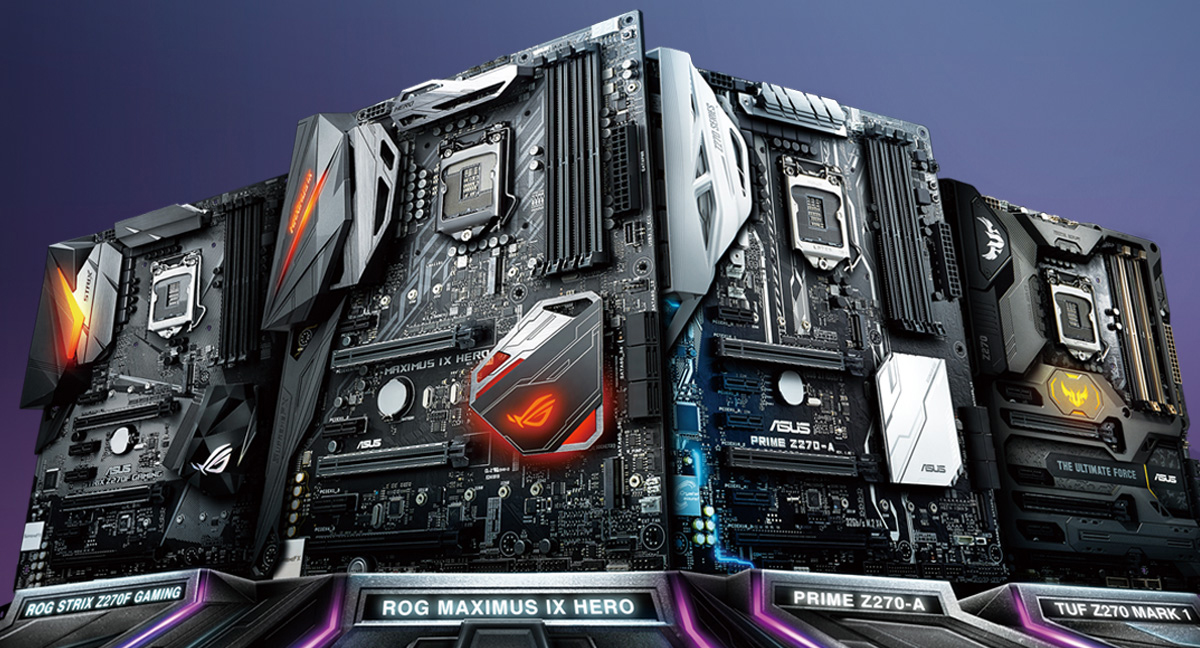
Before we get into that, it makes sense to quickly discuss what the Z270 chipset offers over its predecessor, the Z170. The backend DMI bandwidth is identical (PCIe X4 Gen 3), with a max theoretical bandwidth of 40 Gbps (32 Gbps effective, due to addressing overhead). There are changes on the front end of the chipset, though, with Z270 getting a total of 30 high-speed IO lanes, versus the 26 of Z170. Both platforms can reassign the same number of lanes to storage devices, but due to having fewer resources, enabling an M.2 X4 slot will cost you two SATA ports on Z170. In comparison, you can use an M.2 slot with a X4 PCIe SSD on Z270, without sacrificing SATA ports. Not a big change by any means, but one that adds a tad more flexibility for storage configurations.
Comprehensive cooling controls
Like their predecessors, the ASUS 200-series motherboards offer a slew of cooling controls for system fans and water pumps, including full PWM (four-pin) or DC (three-pin) support, automatic calibration, a dedicated water pump header for AIO coolers, a high-amperage header for ultra-high-speed fans, and comprehensive control over each header via firmware or software. Each header also features a hysteresis function that allows you to control how quickly fan speeds change in relation to temperature, helping to avoid rapid fluctuations that can be annoying. Building upon that impressive feature-set, three-pin, and four-pin fans can be detected automatically by every onboard header, making first-time setup a breeze.

For a few generations now, ROG motherboards have allowed users to map each fan header to a variety of thermal sources. A fan can be set to react to CPU temperatures, one of the several onboard thermal diodes, or even an external temperature probe. While this is very extensive, the missing element in this arsenal is the ability to directly map graphics card temperatures (the GPU core diode) to chassis fan controls. With fans referencing the CPU, onboard sensors, or even an external probe taped to the back of a graphics card, chassis fans don’t tangibly react to GPU-intensive applications, and that leads to elevated system temperatures when gaming. Given most PCs face a variety of workloads, the situation is far from ideal.
Fortunately, things are about to change, as our 200-series motherboards have the ability to map GPU core temps (of supported ASUS graphics cards) to system fans, as well as the ability to assign up to three thermal sources to each fan header. And it’s done in a smart way; the firmware and software are coded to compare the temperature of each sensor and automatically react to the hottest one. So, whether the system is crunching its way through CPU or GPU-intensive workloads, everything is cooled efficiently.
When you take a look at the total package, these features takes system cooling to a different level, trading blows with and surpassing the best standalone fan controllers on the market.
Taking care of M.2 drives
One of the pain points with the previous generation of motherboards was the placement of onboard M.2 slots. The typical location was below the primary PCI Express slot; an area that is subject to limited airflow. High-performance M.2 drives tend to run hot when pressed for data, and high temps can negatively impact NAND endurance and lifespan. Therefore, placing high-performance M.2 drives under a hot graphics card isn’t considered best practice.
That begs the question of why such a location was chosen by motherboard manufacturers? The answer probably lies in the simplicity of PCB trace routing, and to an extent, the fact that the storage industry was in a state of flux when the Z170 motherboards were in the development phase. Intel was gearing up to push the U.2 interface into the consumer space with their excellent 750 series, while Samsung was testing the waters with the (OEM only) XP941 series of M.2 drives. Technically, U.2 makes more sense from thermal, power, and capacity perspectives, so one would be forgiven for placing bets on the interface early on. At ASUS, we decided to support both U.2 and M.2 on our Z170 boards – it was only logical to do so.
However, even though the initial drives from Samsung were OEM only, with no consumer support channel, and performance handicaps in comparison to Intel’s 750, most enthusiasts gravitated towards the XP941. The demands were so high that it gave Samsung the impetus to make an assault on the consumer space with an improved M.2 drive. Thus, the M.2 based Samsung 950 Pro was born. Pricing was competitive, performance traded blows with Intel’s 750 series, there was a proper support channel, and the drives were available on a global scale. The 950 Pro was an instant success.
More recently, the Samsung 950 has been superseded by the 960 Pro. Available in capacities up to 2TB, it is the fastest consumer-level NVMe M.2 drive on the market. Needless to say, M.2 has become the enthusiast’s preferred interface for high-speed storage.

It’s not all smooth sailing, though, because even the Samsung 960 Pro runs hot when faced with certain workloads; the inevitable side-effect of dissipating lots of heat into the small, M.2 footprint. If the 960 is anything to go by, thermal management is going to be an issue we need to deal with for the foreseeable future. That’s why we reassessed location of M.2 slots on the Z270 series motherboards. Unlike their Z170 counterparts that featured a single M.2 slot, the Z270 boards have two. Where possible, we’ve repositioned the slots to avoid hot zones, and, where necessary, we’ve developed solutions to help keep drives cool, such as heatsinks, and 3D-printable fan mounts. Together, these enhancements enable drives to deliver consistent performance and aid their longevity.
Overclocking options for all
Providing users with all the “knobs and switches” necessary to overclock a platform has always been a focal part of the ROG motherboard series. All of our Z270 boards include manual and automated overclocking options in firmware and software that are suitable for beginners and advanced users alike.
For newcomers, our automated 5-Way Optimization software intelligently tunes system performance by running stress tests and gradually applying changes to multiplier ratios and voltages to provide an overclock that is uniquely tailored for your system. Cooling profiles are also tuned as part of the 5-Way optimization process, with each system fan receiving a custom speed-curve based upon its location and characteristics.
If you’d like to influence the final result, every aspect of 5-Way is adjustable. Stress test duration and weight, temperature limits, maximum voltage, and frequency targets can all be changed to suit requirements. Put simply, (cue Jeremy Clarkson impersonation) “5-Way optimization is the best automated system tuning utility…in the world”.
There’s an evolutionary tale for overclocking enthusiasts, too. The ASUS Thermal Control Tool software detailed in this article from June last year, has been coded into the Z270-series UEFI. This allows us to configure two CPU core frequency targets directly from firmware; one for light-load applications, such as games, the other, for more stringent loads. Both overclock targets can be assigned separate voltage levels and temperature targets, so we can run our games and light-load applications at higher frequencies than workloads that generate more heat. The feature works by monitoring temperature and applying the user-configured voltages and multiplier ratios when the defined thermal thresholds are breached. We’ve managed to overclock our CPUs an extra 200~300 MHz higher for light-load applications using this method. It’s fiendishly simple, yet remarkably effective.
Aesthetics and Aura Sync RGB lighting
For many of us, it’s the open platform nature of PCs that makes DIY appealing. Hundreds of manufacturers are involved in producing components and peripherals, giving consumers a huge amount of choice when putting together a system. However, this freedom is not without its downsides. To add some context, PC components and peripherals have to meet certain standards to work with one another. Basic compatibility aside, it’s up to the manufacturer how a device looks, and what its unique features are. Competition is fierce, so manufacturers will do everything possible to make their products stand out from the crowd. The inevitable outcome to this one-upmanship is a scattered industry, with little in the way of visual synergy between devices. I’ve seen companies release components and peripherals that look fantastic in their own right, but you can’t build a cohesive looking system around them because products from other manufacturers don’t aesthetically match.
At ROG, we’re in a unique position in that we provide the most comprehensive ecosystem of PC components in the industry; producing motherboards, graphics cards, keyboards, mice, monitors, headsets, and sound cards. It has taken years to develop all of these products to the extent that they’re successful within their respective segments. Now that they are, the next milestone is to tie everything together at a deeper level to enhance the user experience. Given one of the irksome issues for PC builders is finding components that aesthetically match, it makes obvious sense for us to help by ensuring the products we develop in-house have visual synergy.

The ROG 200-series continues the process of refinement, featuring a more synergistic color palette and design cues that are tactfully accented by onboard RGB lighting. All ATX size boards include two 5050 RGB headers, each capable of powering a light strip up to 2 meters in length. Control over lighting is provided by our Aura Sync software, which grants access to hundreds of colors and a multitude of effects. There’s even the option to display CPU temperatures as colors, giving Aura functional as well as visual appeal. Attached RGB strips and the onboard lighting can be configured to display independent colors and effects, or work in tandem. And it can all be teamed with ASUS Aura Sync compatible graphics cards and peripherals to create a coordinated aesthetic theme.
To give you more choice, we’re also working closely with third-party manufacturers to expand the Aura eco-system, so that users can harmonize the appearance of their entire build. Aura Sync ready chassis from Deep Cool, NZXT, and the 805 Infinity from InWin are already available, and now, acclaimed memory-vendors GSkill join the stable with their new Trident Z RGB memory.
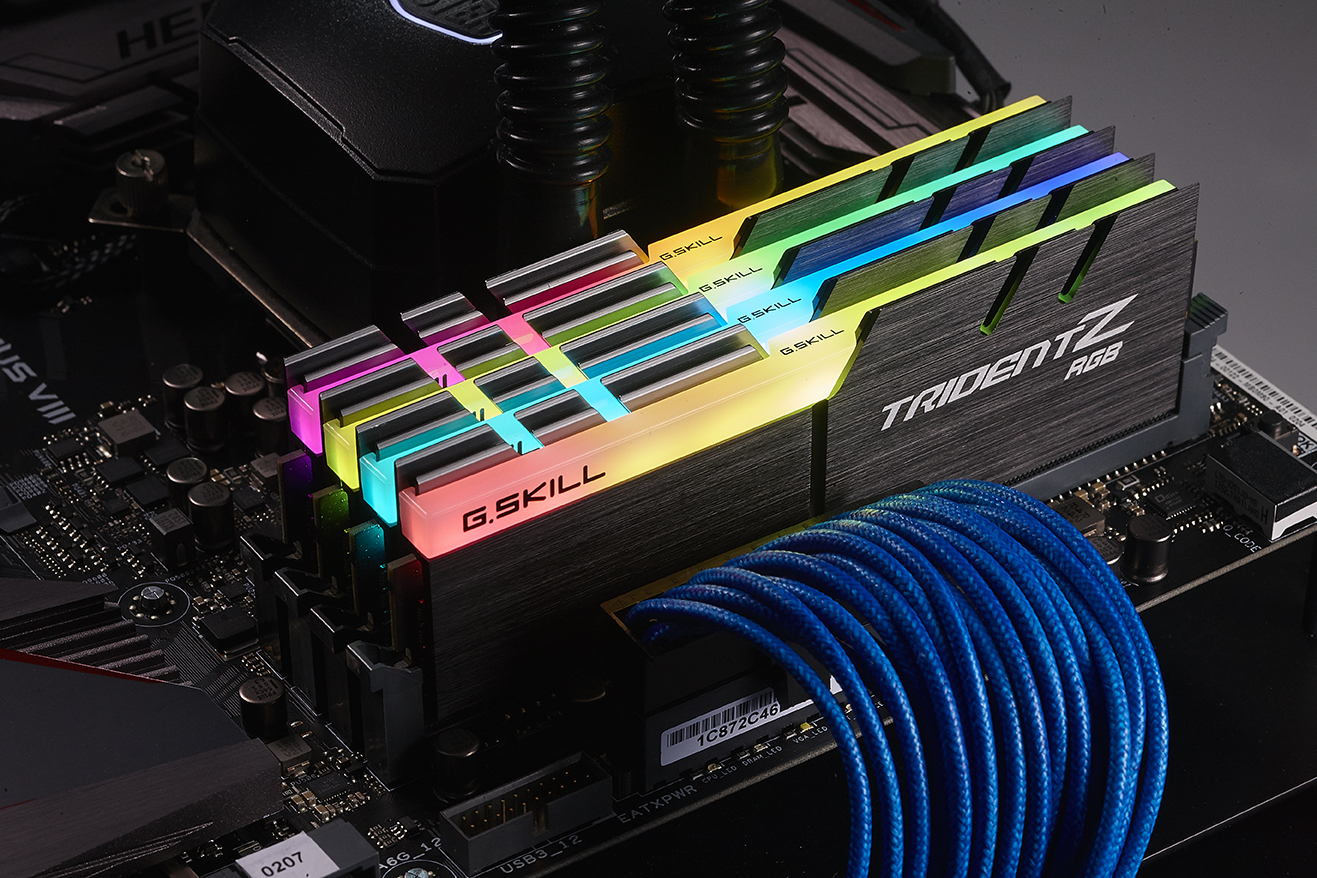
G.Skill isn’t the only memory vendor getting in on the action; we’re also working closely with Avexir, Corsair, and Kingston, who are readying a range of memory kits that we should see in the retail channel, shortly.
For users that prefer understated, don’t fret; the RGB lighting features of all Aura components can be turned off completely. To be honest, the neutral color themes being employed on these products look great even without illumination. You’ll probably appreciate that comment more if you’ve been following the PC industry for a few years. It wasn’t that long ago when color palettes that are best described as “clowns gone wild” were forced upon us. Today, we’ve got options that allow you to define whether a system’s appearance is lucid, or subtle. The choice is yours.
3D-printing support
With neutral color schemes and RGB lighting options enjoying success in the marketplace, giving users the means to physically modify a system, whether for function or form, should be the next milestone. Thanks to 3D-printing technology, it is now possible. Some of the new motherboards include dedicated mounting points for 3D printable parts, and we’re providing source files that users can download and print using an online 3D-printing service or their own printer. Downloadable files include created IO shrouds, nameplates, cable covers, cable combs, SLI bridge covers, and even an M.2 fan mount to help keep drives cool.
To help get you started, there’s a dedicated section for 3D-printing on the ROG forums where you can provide feedback and share knowledge, and we’ve created a tutorial that teaches you how to personalize the parts with your own logo by using CAD software. Enjoy!
SafeSlot
Over the past few years, the weight of graphics cards has increased significantly. The additional burden comes from two antagonists; bulky cooling, and metal backplates. Both are a necessity. The former, to facilitate higher GPU clock speeds while keeping fan noise at acceptable levels, the latter, to stop the graphics card’s own PCB from buckling due to weight. Unfortunately, this weight hike also has implications for PCI Express slots. When fully built systems are shipped or moved from one location to another, rough handling can lead to PCI Express slots splitting, and in some cases, connectors being torn away from the motherboard. Enter SafeSlot, a reinforced expansion slot that is designed to withstand the feisty mitts of hasty system builders, and the rigors of transportation.
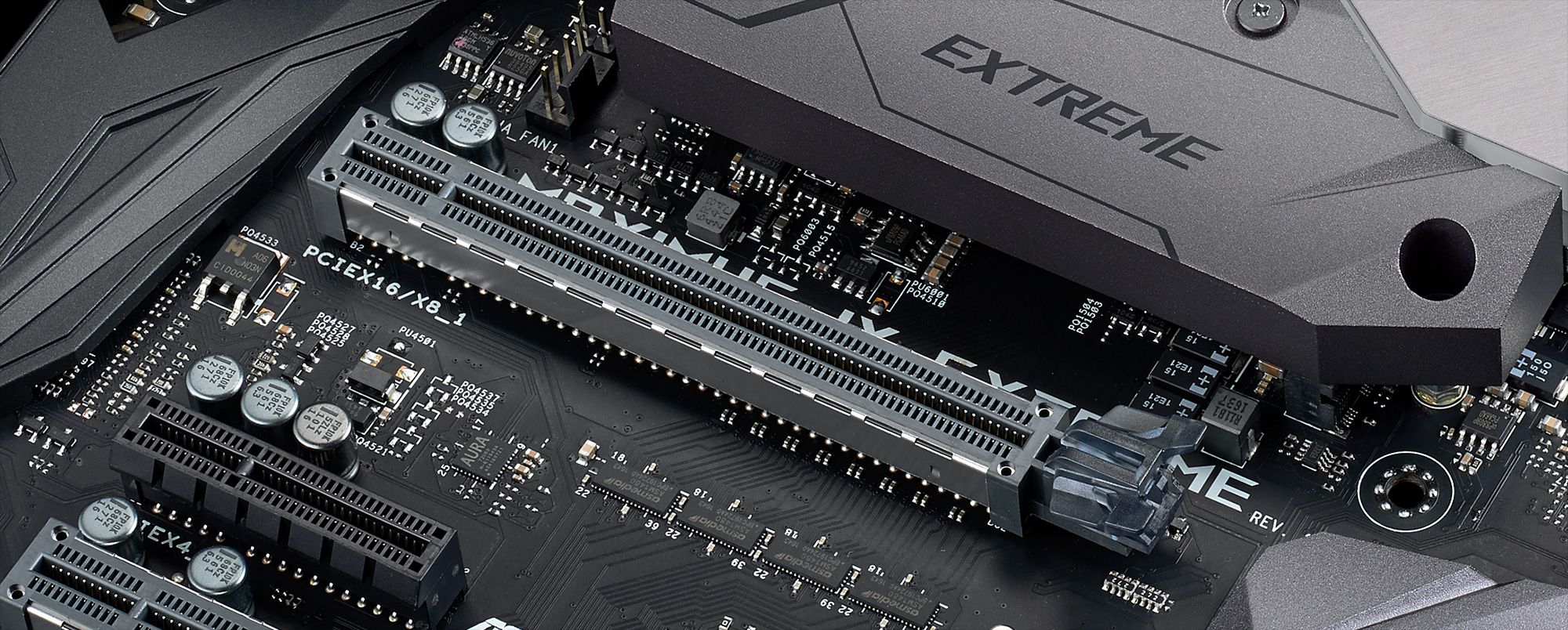
SafeSlot uses an insert moulding process to brace the exterior walls of the PCI Express connector with steel plates, and utilizes additional solder points to anchor the slot firmly to the motherboard. These enhancements lead to SafeSlot being capable of handling more force across all three axes than competing solutions from other manufacturers. All ATX and micro-ATX sized motherboards featured in this article have two SafeSlots, and even the mini-ITX ROG Strix Z270I’s lone PCI Express connector is at full SafeSlot spec.
ROG and Strix software
Shared across the ROG family, there’s an impressive software bundle for gamers. The features are so comprehensive that it’d take a separate article to detail them all. For sake of brevity, we’ve picked out the salient utilities and provide a quick explanation of their function. Rest assured that the complete bundle offers more features than any other manufacturer.
Starting with audio, there’s the Sonic Studio package, which offers a gargantuan array of processing options, including accurate surround emulation for headsets, DSP options to enhance in-game sound effects, and noise cancellation for online communications. To give you a distinct edge in first person shooters, there’s Sonic Radar II, a highly configurable in-game overlay that shows the direction that footsteps and gunshots sounds are originating from. It’s a handy utility if you need to keep volume levels low, or if you favor visual rather than aural information during the heat of battle.
Networking and storage get software enhancements, too. Our Gamefirst IV software allows you to prioritize network packets to applications that need the bandwidth most. And for storage, there’s RAMCache, which intelligently utilizes system memory to drastically improve the access times of frequently used files.
ROG Strix motherboards
Sporting more of a gaming-oriented focus than the conservatively modelled Prime Z270-A, the Strix series is comprised of five models, spanning the entry-level to mid-range market segments in ATX, m-ATX, and mini-ITX form factors. Today, we’re going to look at one model from each form factor.
Being part of the family, there are some tangible features that the Strix series inherits from its high-end ROG brethren. Aura RGB lighting is featured throughout the Strix series, and there are up to two onboard 5050 RGB strip headers that can work independently or in tandem with the onboard lighting. Unlike the ROG Maximus motherboards, you don’t get independent control over each 5050 header, but the full gamut of control and effects remains intact.
SupremeFX 1220A audio also makes its way to the Strix. Utilizing the Realtek S1220A codec and isolated signal and power pathways to eliminate noise, our latest audio implementation is capable of driving all the latest gaming headsets, so you don’t need a dedicated headphone amp to get the best sound from your cans.
The benefits of the ROG team’s overclocking expertise also trickles down to the Strix models, delivering a smooth overclocking experience whether you’re using our 5-Way Optimization software, or tuning the system manually.
| Strix Z270I Gaming | Strix Z270G Gaming | Strix Z270E Gaming | |
|---|---|---|---|
| CPU support | Intel® Socket 1151 for 7th/6th Generation Core | ||
| Chipset | Intel Z270 | ||
| Memory | 2 x DDR4 up to 4266MHz | 4 x DDR4 up to 4000 |
4 x DDR4 up to 3866 |
| Onboard VGA outputs | 1 x HDMI (1.4b) 1 x DP (1.2) |
1 x HDMI (1.4b) 1 x DP (1.2) |
1 x DVI-D 1 x HDMI (1.4b) 1 x DP (1.2) |
| PCIe 3.0 x16 slots | 1 | 2 (supporting x16, x8/x8) | 2 (supporting x16, x8/x8) |
| PCIe 3.0 X 16 (x4) slots | - | - | 1 |
| PCIe 3.0 X 1 slots | - | 2 | 4 |
| Multi-GPU | - | 2-way SLI/CrossFireX | 2-way SLI/CrossFireX |
| Gigabit Ethernet | 1 x Intel | 1 x Intel | 1 x Intel |
| Wireless | 2 x 2 802.11ac Wi-Fi Bluetooth v4.1 |
2 x 2 802.11ac Wi-Fi Bluetooth v4.1 |
2 x 2 802.11ac Wi-Fi Bluetooth v4.1 |
| Storage | 2 x M.2 4 x SATA |
2 x M.2 6 x SATA |
2 x M.2 6 x SATA |
| USB 3.1 | 1 x Front panel connector | 1 x Type-C 1 x Type-A 1 x Front panel |
1 x Type-C 1 x Type-A 1 x Front panel connector |
| Audio | SupremeFX S1220A | SupremeFX S1220A | SupremeFX S1220A |
| Aura lighting | Onboard + 1 x strip headers | Onboard + 2 x strip header | Onboard + 2 x strip headers |
| Form factor | Mini-ITX | m-ATX | ATX |
Strix Z270I Gaming: When size matters
The Strix Z270I Gaming may be the smallest motherboard featured in today’s article, but it’s certainly not lacking in features or innovation. Cramming 802.11 AC Wi-Fi, front panel USB 3.1, SupremeFX 1220A audio, four SATA ports, and dual M.2 into the mini-ITX footprint, it gives up almost nothing to its ATX-sized elders. Well, less the obvious memory slot and PCI Express port count.
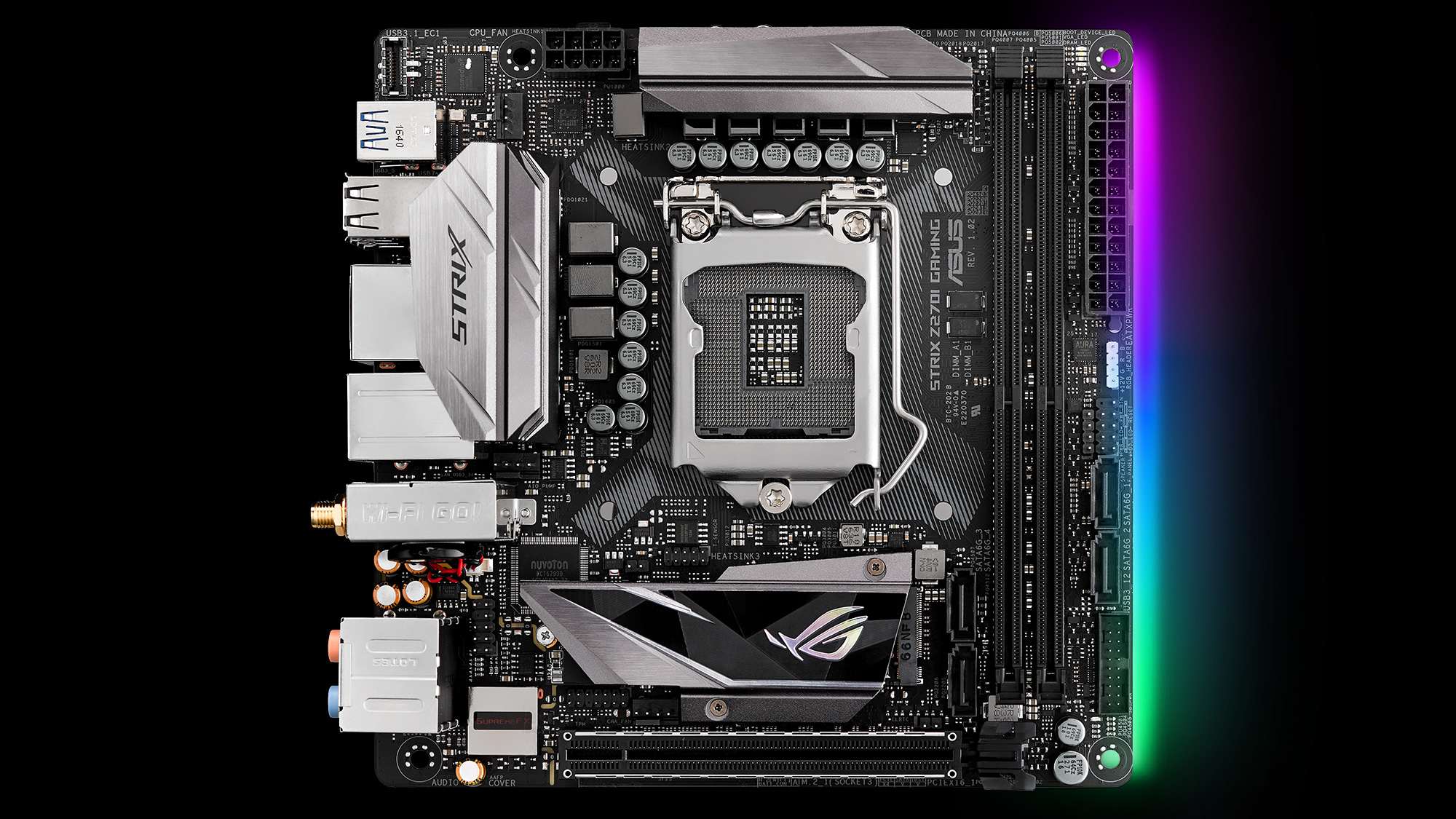
Interestingly, the Strix Z270I’s dual slot memory layout manages to match the Maximus Apex for officially supported memory speeds, although the latter is capable of lower latencies due to a tweaked design. It’s impressive to see, nevertheless. More importantly, the Z270I’s power delivery is capable of sustaining 5GHz overclocks with a capable i7-7700K CPU. There’s no denying the prospect of a mini-ITX system running those speeds is highly attractive.
Obviously, there’s more to a PC build than just overclocking – storage also matters. As stated earlier, the Strix Z270I, features two M.2 slots. One at the front of the board, and another at the rear. The front-facing slot sits below the CPU socket, adjacent to the PCH, and features a double-decker heatsink that cools both the PCH and the M.2 drive. The M.2 portion of the heatsink is thermally isolated from the PCH, to avoid negative influence over temperatures. Final drive temps will, of course, depend on ambient temps, but a good mini-ITX chassis with reasonable airflow should be sufficient to keep temperatures well below throttling point.
Given mini-ITX systems are likely to me moved around from time to time, it’s also comforting to know that the Strix Z270I’s lone PCI Express slot is built to ASUS SafeSlot standards. That means you can use the heaviest of expansion cards without fear of slot damage due to weight or the odd “transportation accident.”
Even Aura RGB lighting makes its way onto the Z270I, with a row of LEDs at the right edge of the board, and a 5050 header for light strips, which is more than enough to light up a mini-ITX chassis.
If you’re strapped for living space or just like to keep things small, load up a Strix Z270I with a decent graphics card, a PCIe X4 M.2 drive, plus a Kaby Lake CPU, and you’ll have the best per-inch user experience money can buy.
Strix Z270G Gaming: The middle ground
The mini-ITX form factor may turn more heads due to its bijou dimensions, but, there are times when its single PCI Express slot just isn’t enough. Sometimes, you need more room for additional expansion cards.
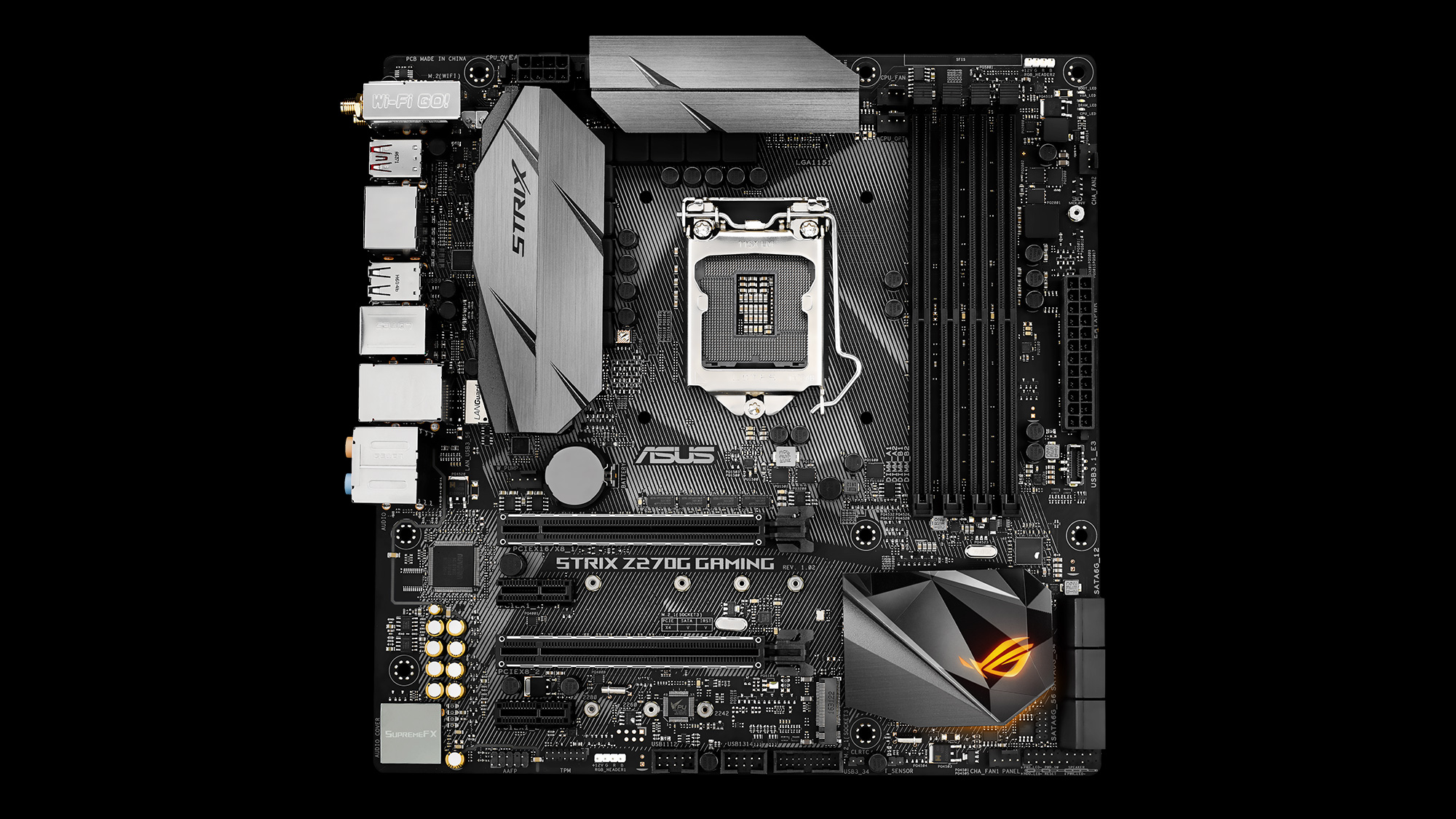
The nicely-proportioned Strix Z270G is one of the most attractive boards in the ASUS 200-series line up. And it’s just as good-looking on the feature front. Like the Strix Z270I you get 802.11ac Wi-Fi, Bluetooth 4.1, and front panel USB 3.1. Stepping up to the Z270G gets you six SATA ports, two USB 3.1 ports on the rear panel, three additional PCI Express slots, and you get the platform’s full array of four memory slots. Naturally, Aura sync also makes the transition, supporting an onboard lighting zone, plus two 5050 RGB headers. You still get dual M.2, as well, although slot location is more compromised than ATX sized alternatives.
If you’re looking for a smaller-than-ATX build, that’s capable of driving the latest high-resolution monitors at consistently high frame rates, the Strix Z270G’s ability to house two graphics cards makes it an obvious choice.
ROG Strix Z270-E Gaming: A sizeable chunk of all things ROG
Strix Z270-E builds upon the foundation laid by the Prime Z270-A, adding some ROG goodness into the equation.

The Z270E has 802.11ac Wi-Fi, with Bluetooth 4.1, and front panel USB 3.1. And there’s the option to add the ROG Front Base, or OC Panel via a dedicated onboard header, providing access to overclocking and fan profile changes at the touch of a button.
A subdued monochromatic theme and edgy, angular heatsinks, give the Z270-E a striking appearance. Aura RGB lighting is also upgraded over lower-priced rivals, featuring an RGB light bar which shines through a diffuser within the IO shroud. Instead of the Z270-A’s single 5050 RGB header, the Z270E provides two, making it more suitable for lighting full-tower PC cases with Aura effects.
Overall, the Z270-E, delivers a solid mouthful of ROG flavor, before we enter the realms of the high-end, where things become more niche.
ROG motherboards
While the Prime and Strix series strike the right balance for the mainstream audience, the five models making up the ROG motherboard stack go all out to cater to true enthusiasts. Starting at the engineering level, more focus is given to PCB trace optimization and firmware to help users extract every ounce of performance the platform has to offer. And as we move through the board stack, we’ll find innovative hardware enhancements that target specific user-groups such as water cooling aficionados, modders, and extreme overclockers, making for a distinct lineup.
Aesthetics and lighting options are also more refined; all boards feature multiple lighting zones and two 5050 RGB headers. Unlike the Prime and Strix models, each header can be controlled independently, or synchronized to display a range of colors and effects.
The Hero, Code, Formula, and Extreme also get enhanced audio capabilities, thanks to Supreme FX1220, which utilizes the Realtek 1220 codec, the ESS Sabre DAC, and a dedicated headphone buffer to deliver an audio experience that rivals the best plugin soundcards.
You also get access to the finer ROG user-experience value-adds, such as ROG BIOS flashback and CMOS clear buttons on the rear IO cluster, taking the frustration out of updating firmware or recovering from over-zealous overclocking attempts. There’s more work put into firmware from an overclocking perspective, too; the firmware contains special profiles that are tuned by our in-house experts, helping you to get the most from the latest high-performance memory kits.
| Maximus IX Hero | Maximus XI Apex | Maximus IX Code & Maximus IX Formula |
Maximus IX Extreme | |
|---|---|---|---|---|
| CPU support | Intel® Socket 1151 for 7th/6th Generation Core i7/i5/i3/Pentium®/Celeron® Processors | |||
| Chipset | Intel Z270 | |||
| Memory | 4 x DDR4 up to 4133+ | 2 x DDR4 up to 4266+ | 4 x DDR4 up to 4133+ | 4 x DDR4 up to 4133+ |
| Onboard VGA outputs | 1 x HDMI (1.4b) 1 x DP (1.2) |
1 x HDMI (1.4b) 1 x DP (1.2) |
1 x HDMI (1.4b) 1 x DP (1.2) |
1 x HDMI (1.4b) 1 x DP (1.2) |
| PCIe 3.0 x16 slots | 2 (supporting x16, x8/x8) | 2 (supporting x16, x8/x8) | 2 (supporting x16, x8/x8) | 2 (supporting x16, x8/x8) |
| PCIe 3.0 X 16 (x4) slots | 1 | 1 | 1 | 1 |
| PCIe 3.0 X 4 | 1 | |||
| PCIe 3.0 X 1 slots | 3 | 2 | 3 | - |
| Multi-GPU | 2-way SLI/CrossFireX | 2-way SLI/CrossFireX | 2-way SLI/CrossFireX | 2-way SLI/CrossFireX 3-Way AMD CrossFireX |
| Gigabit Ethernet | 1 x Intel | 1 x Intel | 1 x Intel | 1 x Intel |
| Wireless | - | - | 2x2 802.11ac Wi-Fi Bluetooth v4.1 |
2x2 802.11ac Wi-Fi Bluetooth v4.1 |
| Storage | 2 x M.2 6 x SATA |
2 x M.2 on DIMM.2 Ext. Card 4 x SATA |
2 x M.2 6 x SATA |
2 x M.2 8 x SATA |
| USB 3.1 | 2 x Type-C 1 x Type-A |
1 x Type C 1 x Type A |
2 x Type-C 1 x Type-A |
1 x Type C 1 x Type A |
| Audio | SupremeFX S1220 | SupremeFX S1220 | SupremeFX S1220 | SupremeFX S1220 |
| Aura lighting | Onboard + 2 x strip headers | Onboard + 2 x strip headers | Onboard + 2 x strip headers | Onboard + 2 x strip headers |
| Audio | SupremeFX S1220 | SupremeFX S1220A | SupremeFX S1220 | SupremeFX S1220 |
| Form factor | ATX | E-ATX | ATX | EATX |
The Maximus XI Hero offers all of the important ROG trimmings at an attractive price point. Stepping up to ROG, you get some notable upgrades over the Strix, Prime, and TUF series motherboards. Off the bat, audio gets a boost via SupremeFX S1220; with more than enough oomph to drive not only gaming headsets, but also the more serious loads of headphones that are aimed at audio enthusiasts. RGB lighting is better distributed across the board, spread across multiple independently-controllable zones. And it doesn’t take more than a cursory look at the Hero to realize there’s an air of aesthetic refinement and togetherness that eludes mainstream alternatives.
ROG Maximus IX Hero: The next level
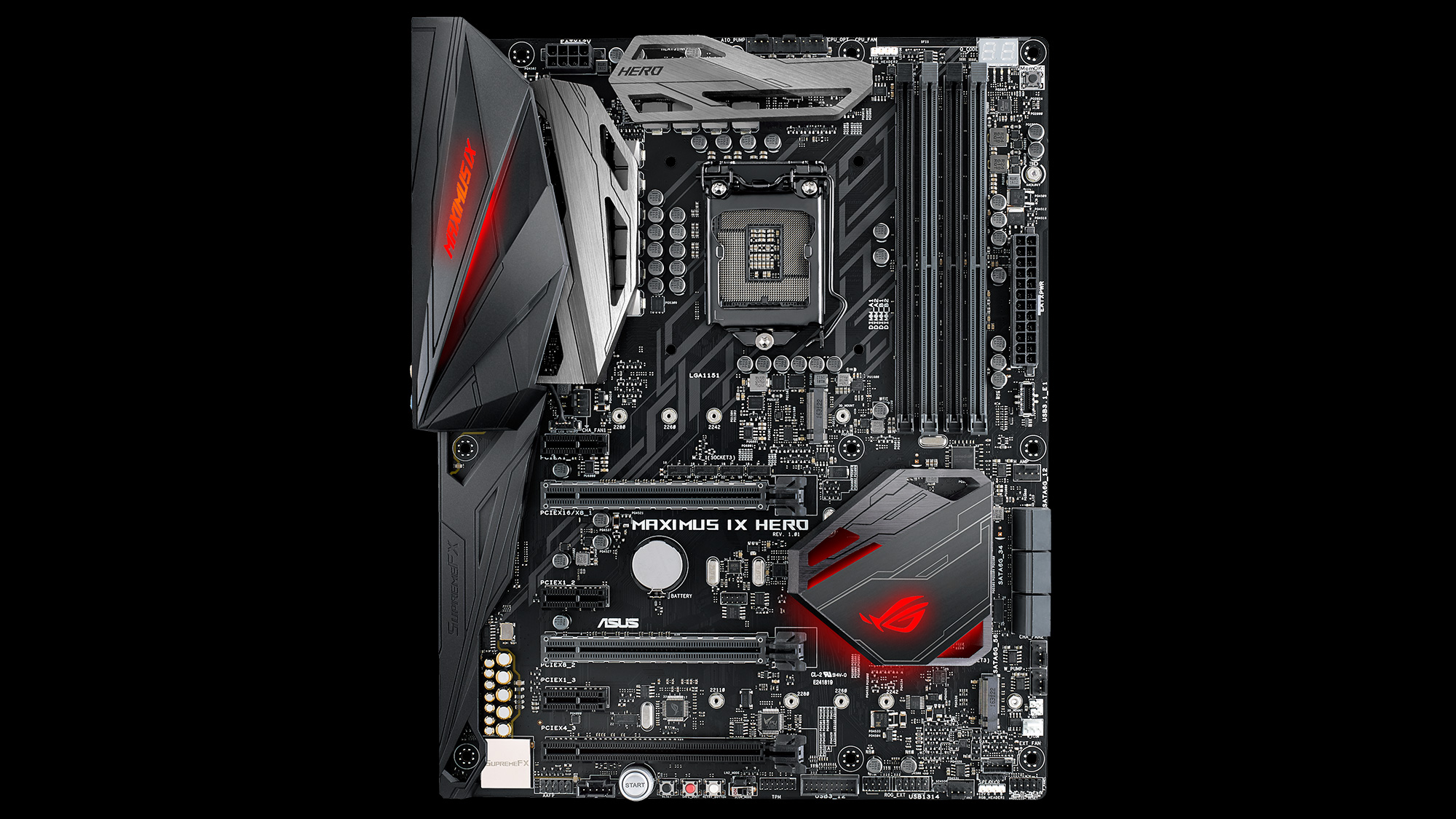
Like the other 4-DIMM-slot ROG motherboards, the Hero hits the DDR4-4133 mark for memory support, surpassing the capabilities of the Prime, Strix, and TUF models by a notable margin.
While the Hero doesn’t focus as deeply on niche user groups like some of the other ROG boards, it does inherit a few of their water-cooling features; onboard headers for flow rate meters and temperature probes. These are little touches that sweeten the deal, catering to system builders who want a fully-featured system, without incurring the additional expense of aftermarket fan controllers.
In comparison to the Strix Z270-E, the Hero concedes onboard WiFi, but sheds the legacy shackles of DVI and PS/2 on the rear panel, favoring the addition of four USB 2.0 ports instead. With that, you still get USB 3.0 and USB 3.1 options at the front and back, so there’s plenty of scope for expansion. Options that I’m sure will be welcomed by gamers that have more than a few USB peripherals to plug in.
ROG Maximus XI Code: Tailored for high-end builds
Maximus IX Code is aimed at squarely at PC enthusiasts that want the latest features with the luxury look and finish that’s fitting of a high-end product.
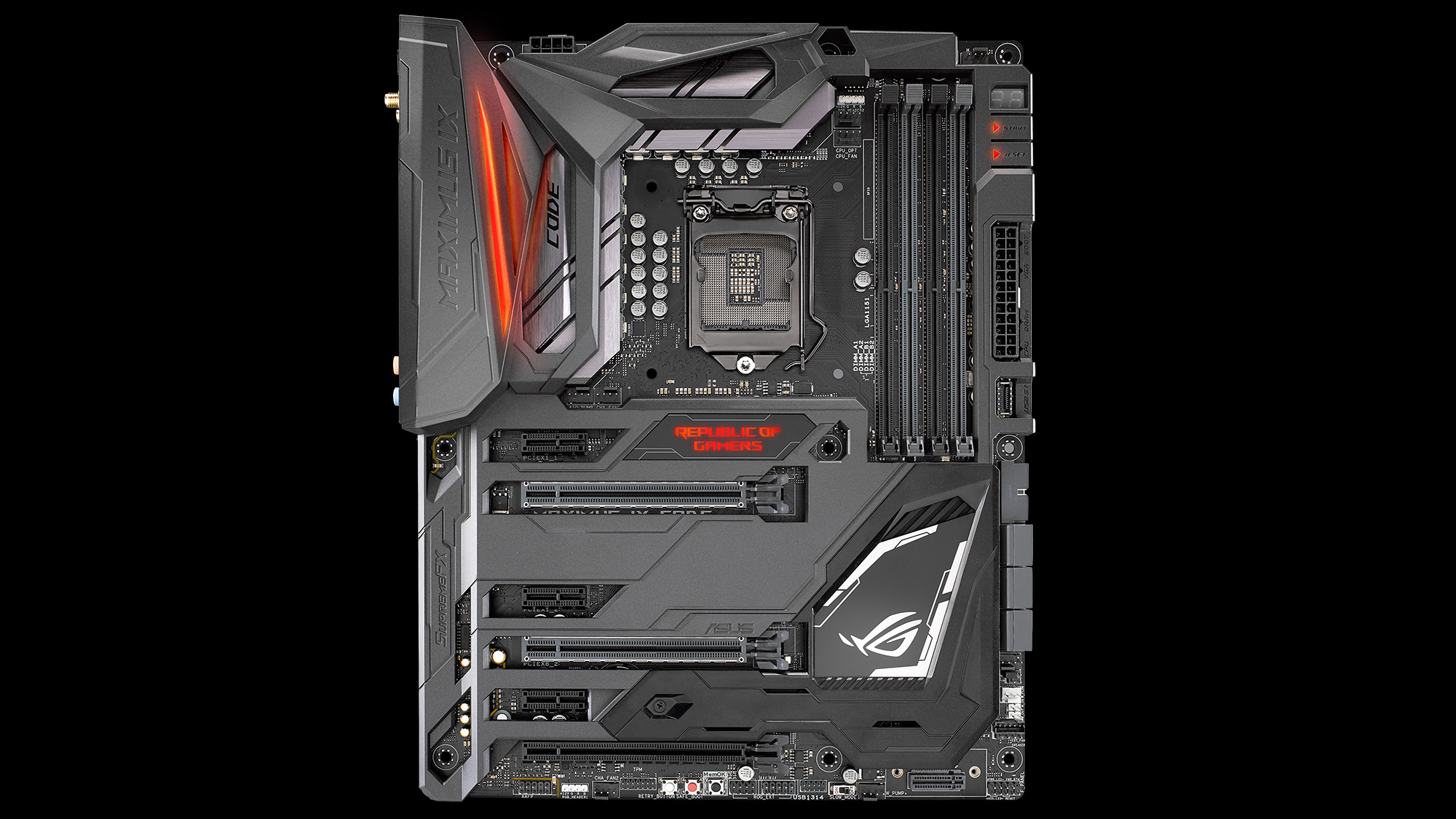
Taking inspiration from the Maximus IX Formula, the Code makes the distinctive ROG Armor accessible to a wider audience. Behind that armor, it is essentially a Maximus Formula, sans the full back plate, integrated IO shield, and VRM waterblock. The streamlining shouldn’t be viewed as a complete negative because the Formula’s integrated VRM water block urges you into the complex world of custom water cooling, while the Code adopts an open-minded approach, allowing you to define the complexity of the build.
Users that pick system parts carefully will find the Code’s neutral canvas a joy to work with. And the parts-matching process is made easier still by Aura RGB lighting, which illuminates the Republic of Gamers logo, IO shroud area, and up to two 5050 lighting strips with the full gamut of colors and effects.
At this level, you’d expect support for all the cutting-edge IO, again, ROG doesn’t disappoint. With onboard 802.11 AC WiFi, Bluetooth 4.1, Intel Ethernet, dual M.2 slots, front panel USB 3.1, and SupremeFx Audio onboard, the Code minimizes the need for unsightly expansion cards, leading to less cluttered builds. In fact, if you give the Code a home in a tempered glass chassis, it’s practically impossible not to end up with a system that looks rather special.
ROG Maximus IX Formula: For water cooling experts
For some of us, a PC isn’t considered to be high-end unless it’s built using the best parts in every location. And if you’re really passionate about it, things go even deeper than that. The process of putting the build together is a hobby in itself. Within the framework of those ideals, there’s no room for slapdash DIY, air cooling, or the convenience of all-in-one water cooling kits. Custom water cooling is a must. Not only that, but the water loop needs to be a work of art. There’s no shame in admitting there’s a bucket load of vanity in such choices. There is, however, some logic behind them. With the right components, you can build a custom water loop that dissipates the heat of multiple components in near silence. There’s something alluring about having a rig that uses the latest high-end CPU and graphics cards, is overclocked to the nines, yet quietly purrs along under the most arduous of workloads. If you’ve experienced such a build, there’s no going back to the mundane.
With an integrated hybrid VRM water block designed by the specialists at EK, the Maximus IX Formula is the perfect motherboard for the hardcore water cooling enthusiast.
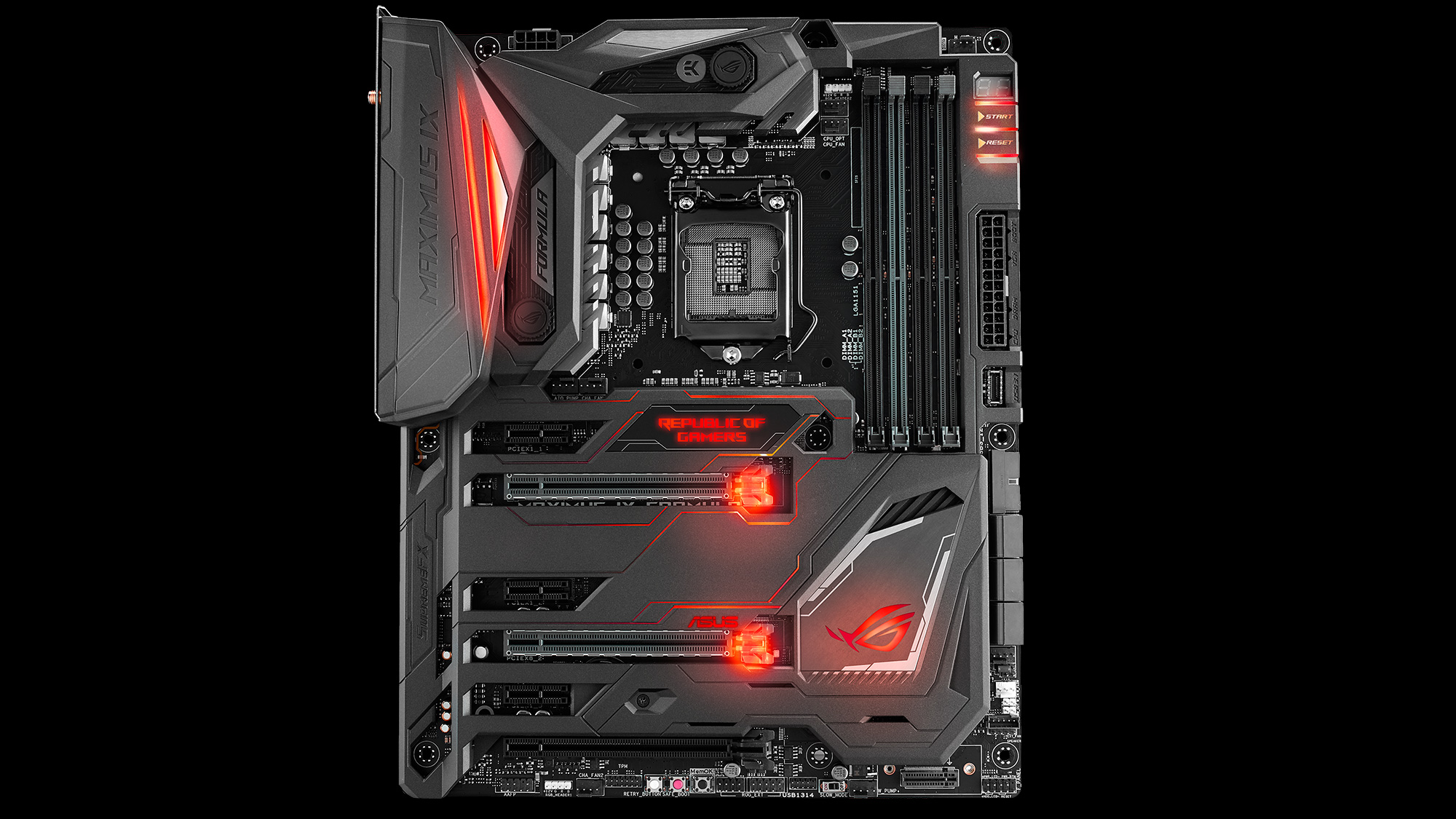
Dubbed CrossChill EK II, the VRM water block incorporates a copper water channel and features standard 1/4” threads that are compatible with a wide variety of fittings. As it’s a hybrid design, you don’t have to use water cooling at all, but then, you might as well opt for the Maximus Code. Getting back on track, with the addition of water cooling, Crosschill EK can drop VRM temperatures by up to 20 Celsius, so you can overclock the system to the limits without needing to provide airflow over the power delivery area. Of course, the vain elephant in the room will tell you that it looks nice when water cooled, and that’s reason enough. Whichever side of the fence you sit on, the bigger story is that it’s better if motherboard manufacturers co-work with leading third-party specialists to integrate these solutions, instead of leaving customers to fend for themselves. Limited runs can take time to develop, resulting in long lead times. There’s nothing worse than buying a new motherboard and then having to wait months before a dedicated water block is released.
At this end of the market, every detail matters. The series IX Formula features a full cover backplate, adding structural rigidity across the entire board. That makes the Formula more resilient to mishaps during installation, such as the inevitable torque when fitting hard line tubing for the first time. It doesn’t give you complete freedom to plumb the loop haphazardly, but we all know a few strange shenanigans can take place during initial attempts at acrylic tube bending. It’s nice to have a layer of protection against those first-time endeavors.
Speaking of DIY hassle, sometimes, even the most focused of us forget to fit the rear IO cover into a chassis before installing the motherboard. No matter how much you like DIY, taking a supposedly complete build apart just to install rear IO cover, isn’t enjoyable…
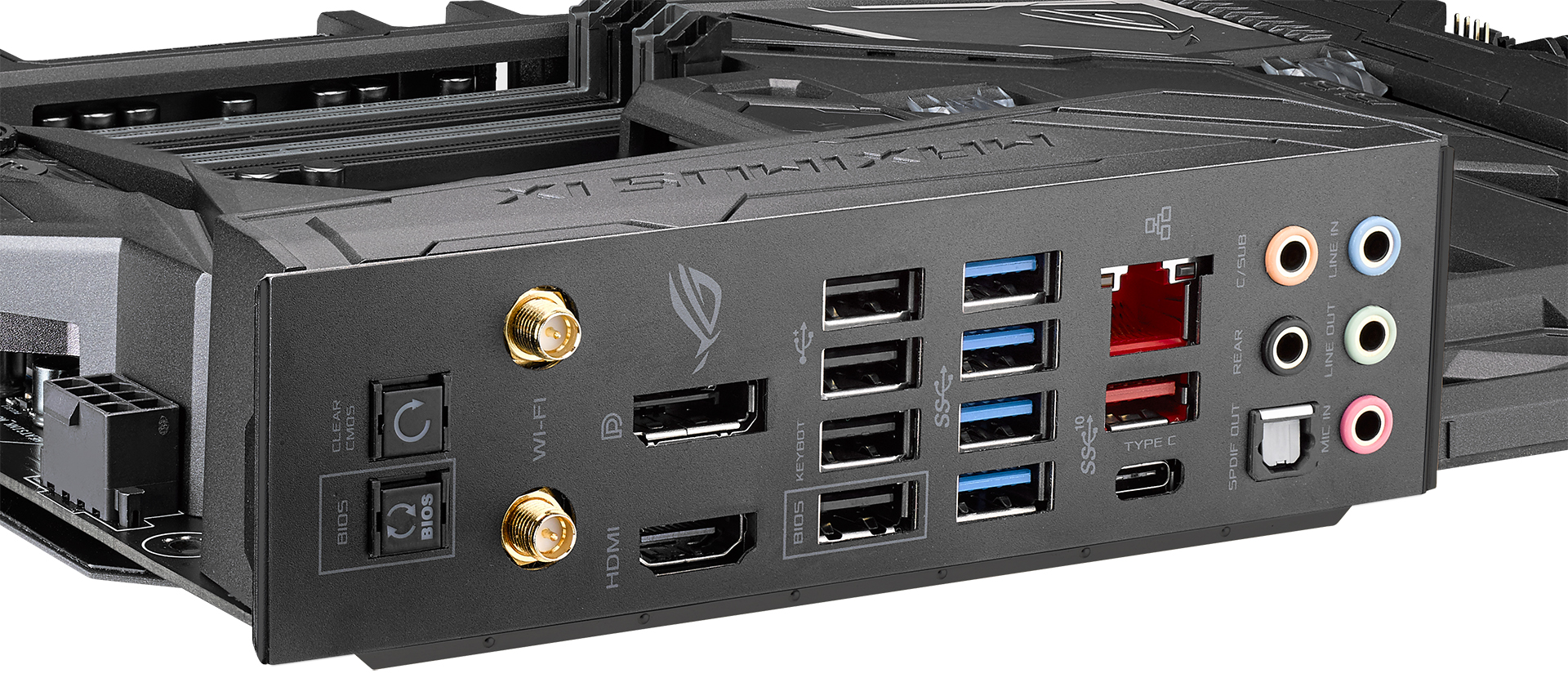
The Formula IX integrates the rear IO cover onto the motherboard, preventing such situations from occurring. It’s another of those neat touches that true high-end products are made of.
Onboard IO functionality includes SupremeFX audio, 802.11AC WiFi, Bluetooth 4.1, dual M.2 slots, front panel USB 3.1, and Intel Ethernet. In comparison to the Maximus IX Code, the Formula’s Aura capabilities are enhanced by the addition of two extra onboard lighting zones, bringing the PCH’s ROG logo and the PCIe slot latches into the mix for sake of visual balance. And finally, onboard support for flow rate meters and water temperature probes complete the Formula’s list of water cooling credentials.
Add all the functionality and the thoughtful touches together, and you can see why the Maximus IX Formula is the board of choice for passionate DIYers.
The ROG Maximus IX Apex and Maximus IX Extreme
Historically, ROG boards bearing the Extreme moniker have been designed to serve two audiences; the first, extreme overclockers, and the second, performance enthusiasts that want bleeding-edge features. For the most part, each iteration of the Extreme has served both roles well, maintaining top dog status by setting numerous world records, and being the board of choice to experience the latest in tech. However, the industry is evolving. Extreme overclocking has become more complex, requiring streamlined layouts and component choices to break world records. On the flipside, the water cooling scene has also expanded to the extent that there’s a sizeable demand for aftermarket monoblocks that fit specific motherboards. Developing a catch-all model to cater to both segments simultaneously would lead to serious compromises; too many to be considered a true enthusiast product by either user group. So, it makes sense to divide and conquer. For sequel IX of the Maximus series, extreme overclocking duties are tackled by the Maximus IX Apex, while the Maximus IX Extreme makes a concerted assault on the enthusiast water cooling scene.
ROG Maximus IX Apex: Streamlined for performance enthusiasts
In today’s competitive market, designing any enthusiast-oriented motherboard is a game of compromise. Certain features have to be tacked-on to add value, and while they broaden appeal to a wider audience, their payload can impinge upon outright performance. The ROG Maximus IX Apex is streamlined to shed such excess.
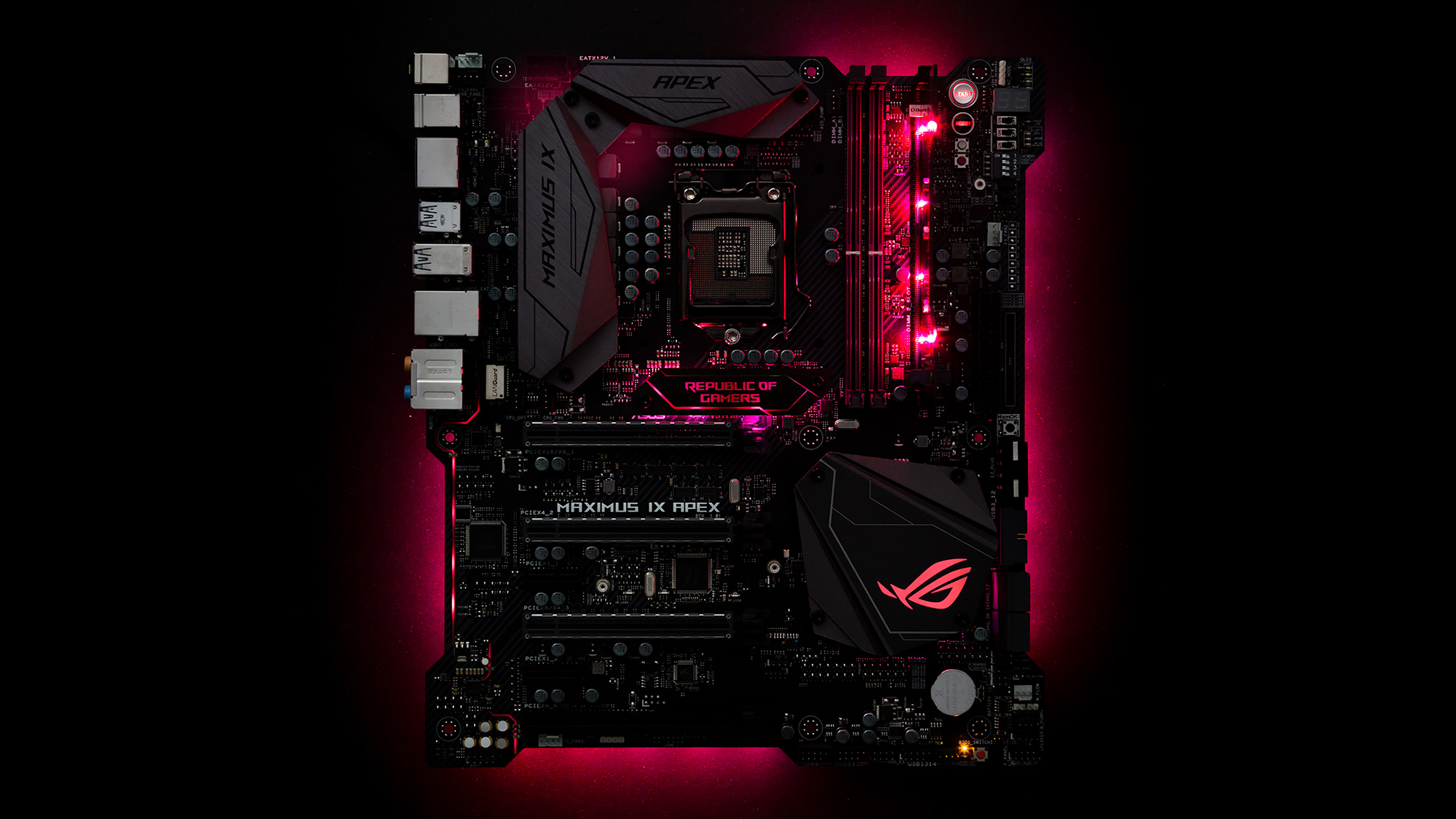
The board’s primary purpose is to shatter performance boundaries and to look good while doing it. Breaking ATX form factor conventions, the Apex adopts a three-DIMM design, instead of using the platform’s full compliment of four memory slots. Actually, only two of those slots are for memory modules, the third, we’ll get to in a bit. So, let’s try that again… Adopting a two-slot design on an ATX sized motherboard allows us to use a highly optimized memory trace layout; minimizing noise, and improving signal integrity.
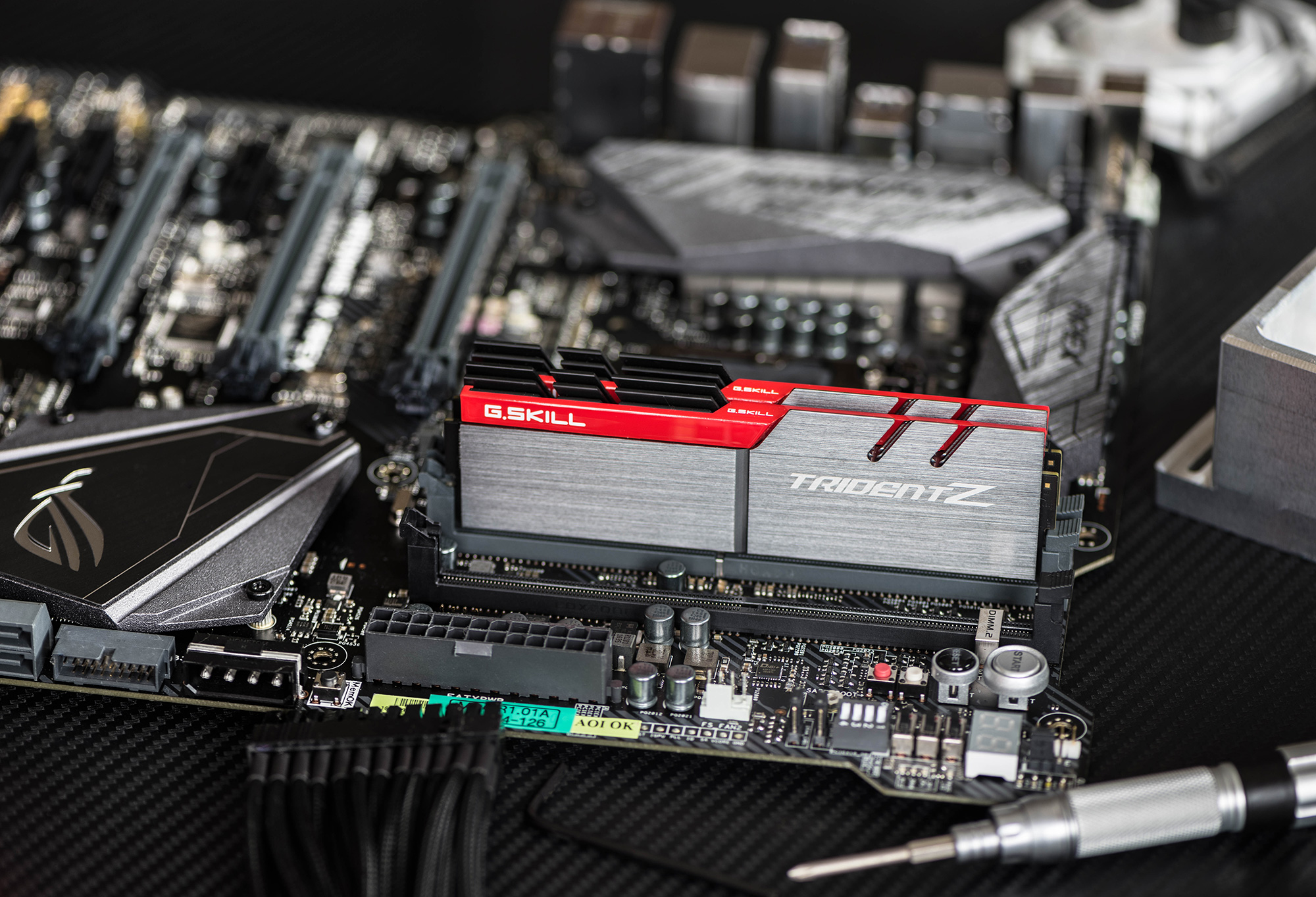
Perfect partners – the Apex and GSkill’s 16GB DDR4-4266 TridentZ memory kit
The improvements usher in support for memory frequencies well beyond DDR4-4266. In-house, we’ve already achieved perfectly stable speeds of DDR4-4415 with select memory modules. The oscilloscope captures below compare the Apex’s signal integrity to a four-slot memory layout.

DQ signal eye for a four-slot Maximus series motherboard – taken at DDR4-3733

DQ signal eye for the Maximus Apex – taken at DDR4-3733
The images were captured by carefully attaching a probe to a memory module with an exposed trace for one of the DQ signal lines. Using the same module and configuration for both motherboards, the scope was configured to capture 1000 samples and display them onscreen. The capture from the Apex clearly shows a cleaner “eye” diagram than the four-slot layout. The explanation for what this means is complex, but in the shortest form, it tells us the memory is more stable on the Apex. Of course, it’s what happens in the real world that matters most. In that regard, the Apex has already smashed a number of world records in memory sensitive benchmarks, achieving frequencies and latencies that are beyond the capabilities of any four-slot motherboard. This early in the game, the Apex’s achievements are impressive, to say the least. As the platform matures, we can expect even more.
Streamlining the feature set also provides space to move thermally challenged technologies into locations that can receive more airflow. It’s time to discuss the purpose of that third “memory slot”.
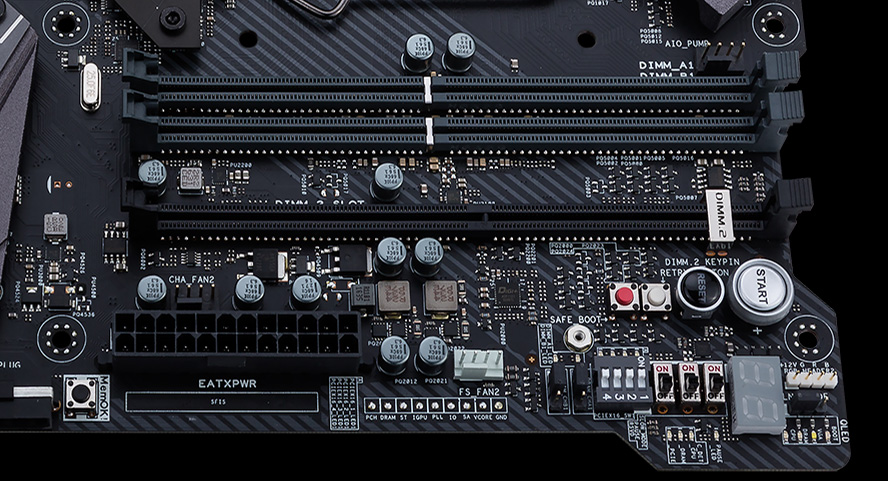
The third slot (DDR4) is wired directly to the PCH and is partnered by a riser card named DIMM.2.
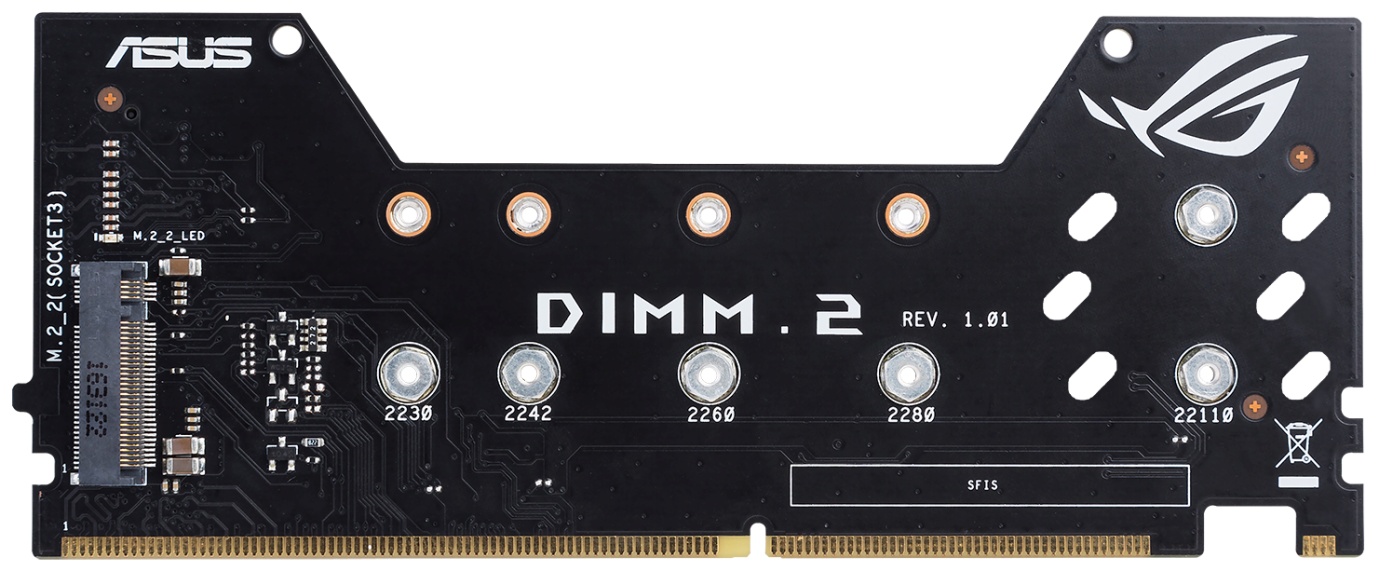
As the name cheekily implies, DIMM.2 is used for mounting M.2 drives. The card features an M.2 slot on either side, capable of housing two drives in all sizes (up to 22110). An additional advantage of using a DDR4 slot is that it permits users to mount a memory cooler directly over the drives, helping to reduce temperatures. The riser card also features two embedded thermal sensors that can be mapped to the motherboard’s fan headers to keep noise levels in check. Topping it all off, a physical failsafe in the form of a small metal bracket straddles the DIMM.2 slot, preventing accidental use of DDR4 memory modules.
Functionally, the Apex is lighter in weight than the Hero and Code; two of the rear USB ports are traded for PS/2 support, in order to allow the use of legacy peripherals during extreme overclocking sessions. Believe it or not, disabling USB ports when pushing a system to the limits can help eek out a few MHz of headroom.
The audio side also gets a trim, lacking the ESS Sabre DAC and the dedicated headphone amp that find a home on the other ROG boards. Given the Apex is likely to attract die-hard enthusiasts as opposed to mainstream mindsets, the absence of these features likely won’t cause concern. Extreme overclockers aren’t interested in onboard audio, while die-hard enthusiasts favor USB DACs or dedicated soundcards as opposed to integrated solutions.
The full spread of onboard ROG overclocking features is also present. Dual BIOS chips allow you to experiment with different firmware versions and provide a path for recovery in case one becomes corrupt. There’s also an LN2 mode switch to aid POST at sub-zero temperatures, and a Slow Mode switch to help stability at critical moments when at the ragged edge.
Aesthetics tend towards the radical, too. Shedding excess controllers, lane switches, and ports, frees up PCB space around the perimeter of the motherboard. Rather than leave those areas barren, the ROG R&D engineers cut them away, and carefully placed Aura-controllable RGB LEDs around the indents to create a subtle glow. The VRM area, ROG logo and nameplate area, PCH, and DIMM.2 module also have AURA RGB LEDs, and there are two 5050 RGB headers. All zones and the 5050 headers can be independently controlled or set to display the same colors and effects. The end result is a motherboard that’s just as at home as the centerpiece of a high-performance gaming rig as it is on a benching table for extreme overclocking sessions. If either of those scenarios appeals to you, look no further than the Apex.
ROG Maximus IX Extreme: For dream rigs
Following in the footsteps of the Maximus IX Formula, the series IX Extreme supports water cooling out-of-the-box. Again, the best approach is for us to co-work with one of the leading water cooling specialists, melding their expertise with ours to develop an integrated solution that surpasses lone efforts. The partner of choice this time is Bitspower, who are at the forefront of today’s enthusiast water cooling scene. It will come as no surprise that our collaborative effort takes things to another level.

The Maximus IX Extreme’s monoblock incorporates RGB lighting, and also integrates flow rate, water leak, and temperature sensors. When installed, the block cools the CPU, the main power delivery circuitry, and there’s an attachable heatsink for M.2 drives, completely negating the need for supplementary airflow to keep things cool. The benefits of collaboration go a lot further than that, though. Both the flow meter and leak detection sensor connect to dedicated headers on the motherboard, allowing monitoring and control from firmware or our Fan Xpert IV software. The detection sensor is capable of turning the system off in the event of a leak, and the user can use Fan Xpert to configure options for shutdown timing and alerts. The integrated lighting is also Aura controllable, along with the IO cover, PCH, and a 5050 RGB header, which modders are sure to make use of. Features of this magnitude usually require expensive standalone controllers and multiple add-ons to provide the same functionality. Here, it’s all seamlessly integrated to keep cable and wiring complexity to a minimum.
Onboard fan connectors are also intelligently located for water cooling radiators, with eight headers divided between the top and lower edges of the board. Two additional fan headers are reserved for water cooling pumps, although they can also be configured to control fans. And there’s provision to attach additional flow rate and temperature sensors for a secondary loop. For truly elaborate cooling setups, you can use the bundled ASUS Fan Extension card, which adds three more fan headers and a complimentary array of thermal probe connectors to the mix.
For pristine looking builds, the ATX 12V power and front panel USB 3.1 connectors are right-angled to keep wiring out of way.
Like the Formula, the Extreme also includes a pre-mounted IO back-plate for convenience. However, there’s a novel lighting twist in the rear IO cluster, thanks to the addition of color co-ordinated LEDs within the 3.5mm audio jacks, saving you from fumbling around in the dark when plugging in a headset.
On the connectivity front, 802.11AC WiFi, Bluetooth 4.1, Intel Ethernet, and two USB 3.1 ports, also make a showing. Upping the ante, the rear panel Type-C USB 3.1 connector doubles up as a Thunderbolt 3 port, delivering speeds up to 40gbps through a single cable. Internally, you also get eight SATA ports, dual M.2 slots for storage, and a front panel USB 3.1 connector, so you’re covered for high-speed IO in every conceivable way.
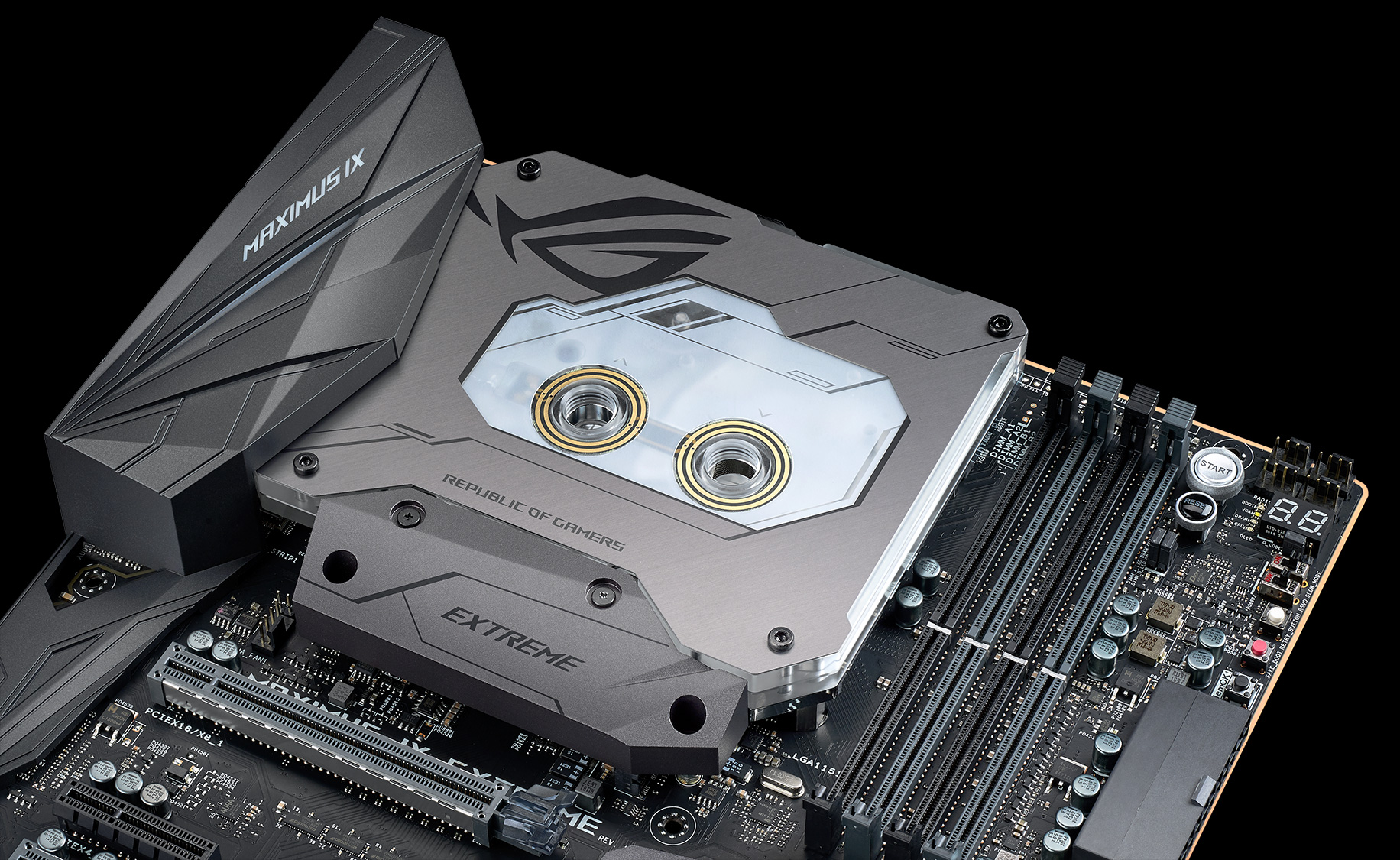
The target audience may have changed, but the level of innovation and attention to detail is sure to place the Maximus IX Extreme at the top of consumer wish lists.
By Raja Gill
Hit the PR button below for more info.
Author
Popular Posts
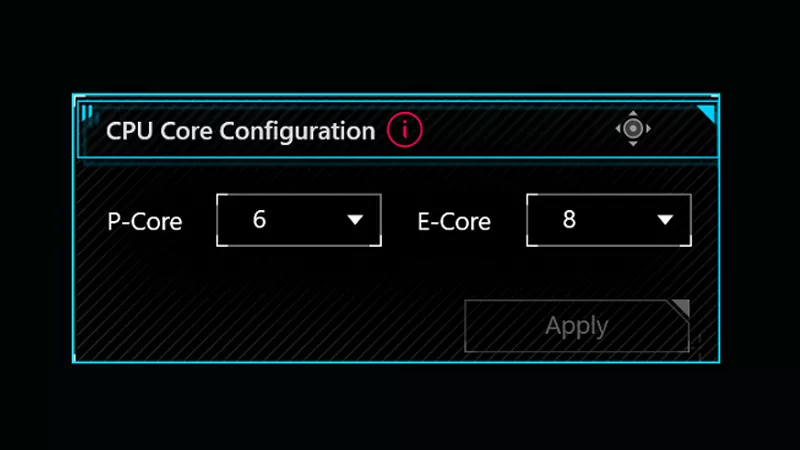
How to adjust your laptop's P-Cores and E-Cores for better performance and battery life

How to Cleanly Uninstall and Reinstall Armoury Crate
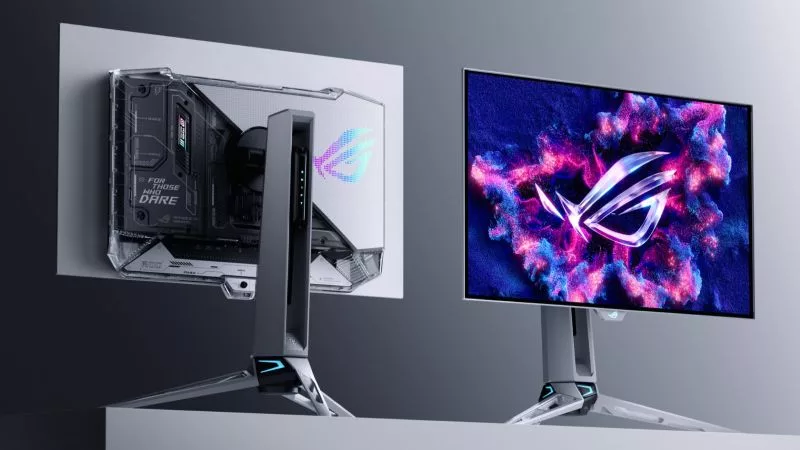
Prepare for Tandem OLED splendor with these new ROG gaming monitors
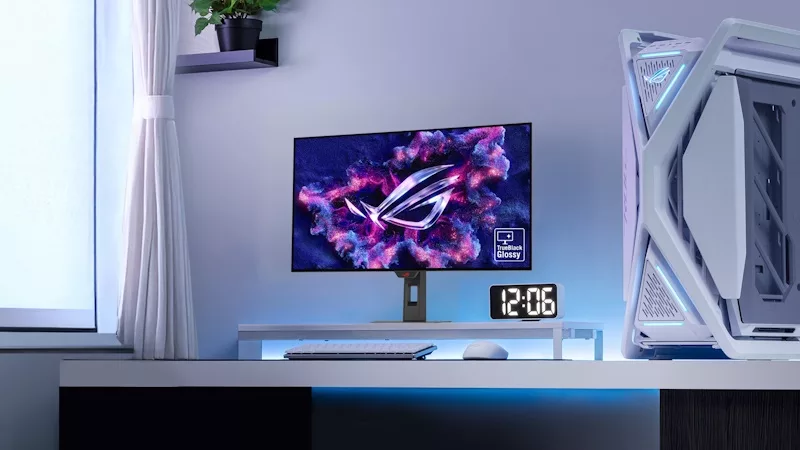
32-inch glossy WOLED panels debut in the ROG Strix OLED XG32UCWMG and XG32UCWG gaming monitors

ASUS GPU Tweak III: The ultimate tool for advanced GPU tuning
LATEST ARTICLES

ROG Strix vs Extreme vs Apex vs Hero: What's the difference between ROG gaming motherboards?
When we launch a new generation of motherboards, we don’t just design one model and expect it to meet everyone’s needs. We give you a broad range of options from our ROG Maximus, Crosshair, and Strix lineups so that you can find the board for your next build.
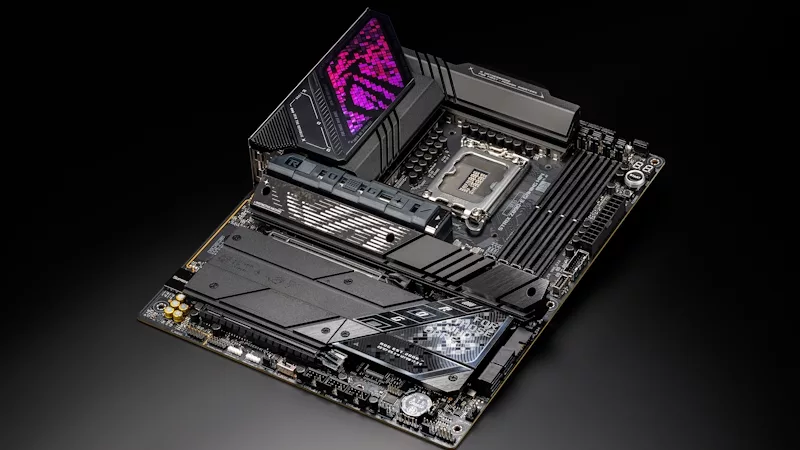
Install up to seven M.2 SSDs on one motherboard with new ROG M.2 PowerBoost tech
Here's how ROG M.2 PowerBoost allows you to install more M.2 drives in one system while enjoying more stable performance.

ROG Z890 motherboard guide: meet the new contenders for your next gaming rig
New ROG Maximus and ROG Strix Z890 motherboards stand ready for your Intel Core Ultra (Series 2) CPU.
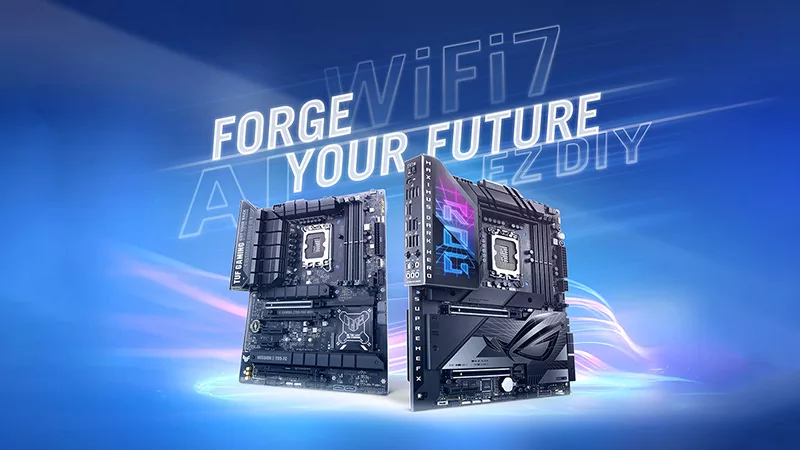
New Z790 motherboards from ROG pave the way for 14th Gen Intel Core CPUs
WiFi 7 support, more fast storage, front-panel device charging, intelligent controls — our latest Z790 motherboards have it all.

New Z790 motherboards from ROG pave the way for next-gen Intel Core CPUs
WiFi 7 support, more fast storage, front-panel device charging, intelligent controls — our latest Z790 motherboards have it all.
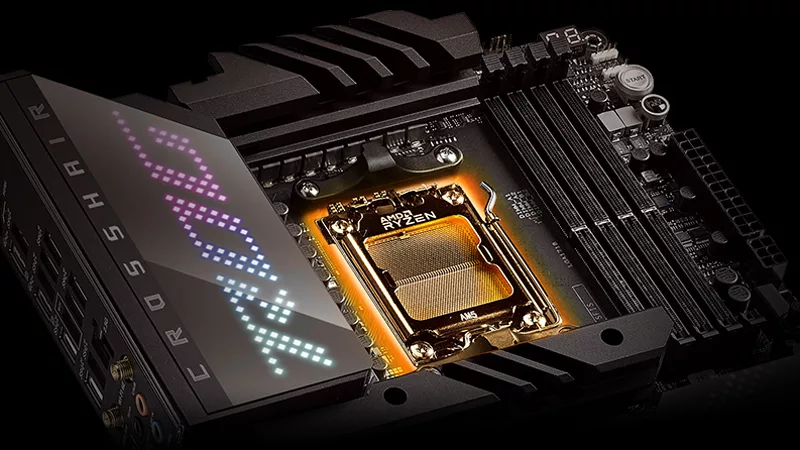
The best motherboards for a Ryzen 9 7950X3D CPU from ROG and TUF Gaming
AMD has released two new processors with 3D V-Cache technology: the Ryzen 9 7950X3D and the Ryzen 9 7900X3D. ROG and TUF Gaming X670 motherboards will provide a rock-solid foundation for these new top-tier chips.
